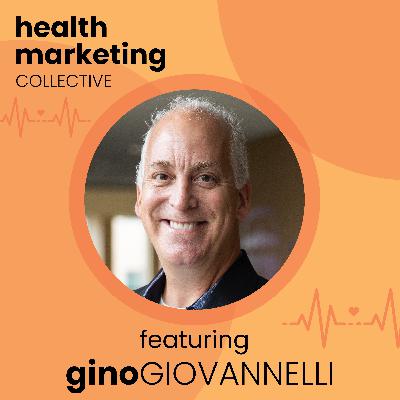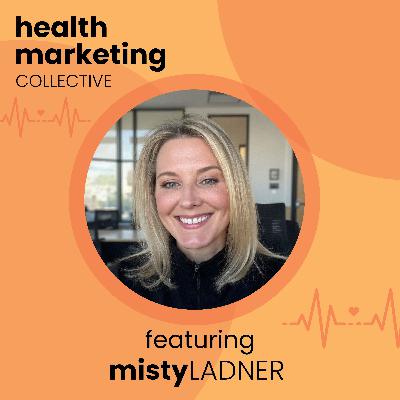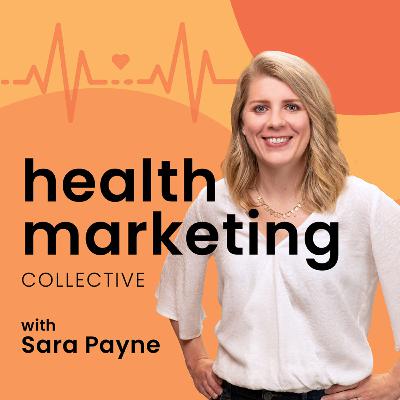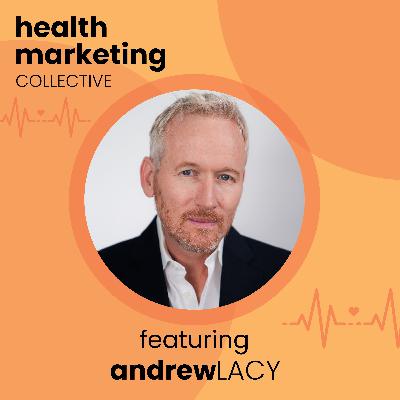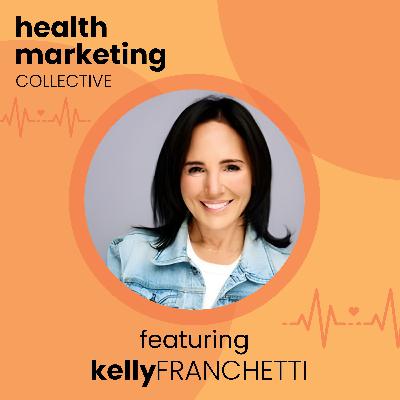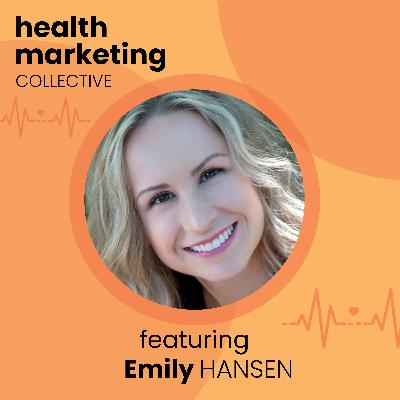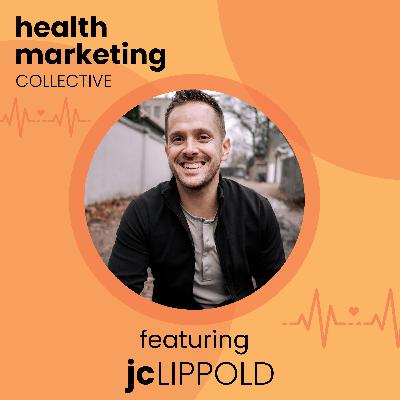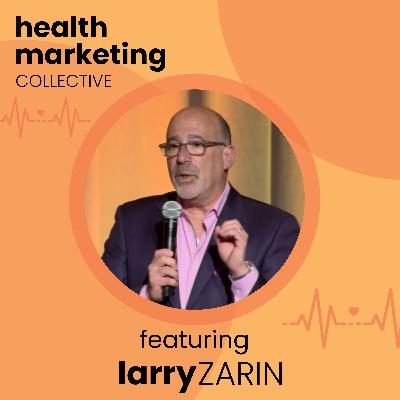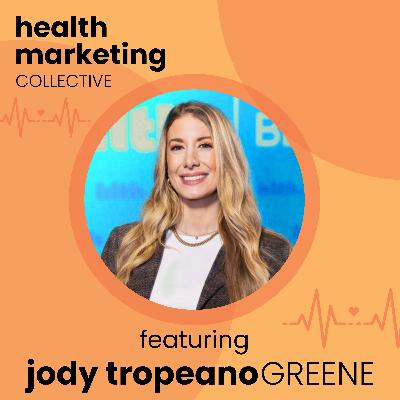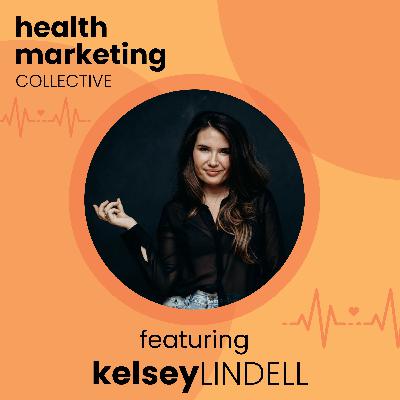The Power of No: Channel Strategy That Actually Works
Update: 2025-08-06
Description
Welcome back to the Health Marketing Collective, where strong leadership meets marketing excellence.
In today’s episode, host Sara Payne sits down with Gino Giovannelli—digital marketing strategist, educator, and founder of Miles Interactive—to discuss a concept that doesn’t get enough credit in modern marketing: the power of saying no. Drawing on his vast experience with brands such as Caribou Coffee, Lifetime Fitness, and even the Super Bowl Host Committee, Gino unpacks why essentialism—doing fewer things, but better—stands at the heart of smart, sustainable marketing strategy.
Gino, who also serves as a professor at the University of St. Thomas and hosts the podcast In the Key of D, brings a fresh, liberating perspective on how marketers can reclaim focus, avoid digital overwhelm, and create more impact by prioritizing what truly matters. Together, Sara and Gino dive into what it means for marketing leaders to show restraint, how to strategically select the right digital channels, and why letting go of the “more is better” mentality can propel organizations (and their teams) further.
This episode is a must-listen for anyone feeling stretched too thin or uncertain about how to cut through today’s digital chaos. Whether you’re a CMO, a marketing manager, or someone seeking to make marketing more meaningful and manageable, Sara and Gino provide both the “why” and the “how” for ruthless prioritization in the digital age.
Thank you for joining the Health Marketing Collective, where strong leadership meets marketing excellence. Because the future of healthcare depends on it.
Key Takeaways
[embed]https://youtu.be/_fTXi4ziD68?si=NmwNZeAYzOKW8B9l[/embed]
About Lindsey Wehkin
As a proven leader in the Digital Marketing space, Gino Giovannelli created Miles Interactive in 2006 to help clients identify how to best leverage the Internet to delight customers and maximize business success. Miles Interactive clients include Caribou Coffee, University of Minnesota Alumni Association, Life Time Fitness, Sun Country Airlines, 2018 Minnesota Super Bowl Host Committee and Minnesota Sports and Events (including the 2022 50th Anniversary of Title IX, 2022 Winter Classic, 2022 NCAA Women’s Basketball Final Four, 2022 MLS All Star Game, 2023 Big Ten Women’s Basketball Tournament. Upcoming website projects include supporting the 2023 NCAA Men’s Swimming and Diving Championship, 2023 USA Junior Girls National Championship for Volleyball,2024 USA Gymnastics Olympic Trials, 2024 NCAA Big Ten Women’s and Men’s Basketball Tournament, 2024 NCAA Men’s Hockey Frozen Four, 2025 NCAA Women’s Hockey Frozen Four, 2026 Special Olympics USA Games and the 2029 Ryder Cup.
In today’s episode, host Sara Payne sits down with Gino Giovannelli—digital marketing strategist, educator, and founder of Miles Interactive—to discuss a concept that doesn’t get enough credit in modern marketing: the power of saying no. Drawing on his vast experience with brands such as Caribou Coffee, Lifetime Fitness, and even the Super Bowl Host Committee, Gino unpacks why essentialism—doing fewer things, but better—stands at the heart of smart, sustainable marketing strategy.
Gino, who also serves as a professor at the University of St. Thomas and hosts the podcast In the Key of D, brings a fresh, liberating perspective on how marketers can reclaim focus, avoid digital overwhelm, and create more impact by prioritizing what truly matters. Together, Sara and Gino dive into what it means for marketing leaders to show restraint, how to strategically select the right digital channels, and why letting go of the “more is better” mentality can propel organizations (and their teams) further.
This episode is a must-listen for anyone feeling stretched too thin or uncertain about how to cut through today’s digital chaos. Whether you’re a CMO, a marketing manager, or someone seeking to make marketing more meaningful and manageable, Sara and Gino provide both the “why” and the “how” for ruthless prioritization in the digital age.
Thank you for joining the Health Marketing Collective, where strong leadership meets marketing excellence. Because the future of healthcare depends on it.
Key Takeaways
- Saying “No” Is Essential to Strategic Marketing Success: Gino champions the philosophy of essentialism, urging marketers to do fewer things—but with much more intention and excellence. Rather than reflexively saying “yes” to every opportunity or channel, success often comes from confidently (and respectfully) saying “no” to good ideas so you have room to say an enthusiastic “hell yes” to the right ones. This discipline frees up resources and attention for what truly drives the business forward.
- Let Business Goals Lead Channel Selection: Marketers often feel pressured to appear everywhere—SEO, SEM, email, social, display, content—but Gino explains why most organizations lack the resources (and sometimes the skills) to execute across all six major digital channels effectively. Instead, he recommends letting business objectives—in particular, whether your greatest need is acquisition or retention—determine which channels you prioritize. For example, a startup should invest in acquisition-focused channels, while an established retention-focused business can double down on email and social.
- Break Out of Habit—Strategy Is About What You Should Do, Not Just What You Could Do: Much of what marketing teams do daily is based on habit rather than strategic necessity. Gino suggests taking a periodic step back to audit activities, questioning which ones genuinely serve current business priorities. Developing a digital marketing strategy means making tough choices—prioritizing high-impact, low-burden opportunities, and relentlessly cutting busywork and legacy activities that offer little value. As Gino puts it, “the difference between could do and should do is simply ‘no’.”
- Apply a Proven Framework for Channel Prioritization: Gino shares his five-step methodology used in both his consulting and university teaching. This framework transforms overwhelming possibilities into a sharp, actionable plan—ensuring resources are channeled where they have the most leverage.
- Evolve With the Changing Digital Landscape—And Use Advanced Tools Wisely: The digital ecosystem is increasingly blurry and interconnected; channels now blend and overlap, making it harder to determine what’s driving results. Gino advises marketers to remain agile, avoid falling in love with legacy “hero channels,” and continually seek out fresh tactics—such as custom and lookalike audiences on social platforms or leveraging over-the-top (OTT) streaming TV for hyper-targeted reach. Staying current, experimenting hands-on, and adapting quickly is key to long-term relevance.
[embed]https://youtu.be/_fTXi4ziD68?si=NmwNZeAYzOKW8B9l[/embed]
About Lindsey Wehkin
As a proven leader in the Digital Marketing space, Gino Giovannelli created Miles Interactive in 2006 to help clients identify how to best leverage the Internet to delight customers and maximize business success. Miles Interactive clients include Caribou Coffee, University of Minnesota Alumni Association, Life Time Fitness, Sun Country Airlines, 2018 Minnesota Super Bowl Host Committee and Minnesota Sports and Events (including the 2022 50th Anniversary of Title IX, 2022 Winter Classic, 2022 NCAA Women’s Basketball Final Four, 2022 MLS All Star Game, 2023 Big Ten Women’s Basketball Tournament. Upcoming website projects include supporting the 2023 NCAA Men’s Swimming and Diving Championship, 2023 USA Junior Girls National Championship for Volleyball,2024 USA Gymnastics Olympic Trials, 2024 NCAA Big Ten Women’s and Men’s Basketball Tournament, 2024 NCAA Men’s Hockey Frozen Four, 2025 NCAA Women’s Hockey Frozen Four, 2026 Special Olympics USA Games and the 2029 Ryder Cup.
Comments
In Channel

